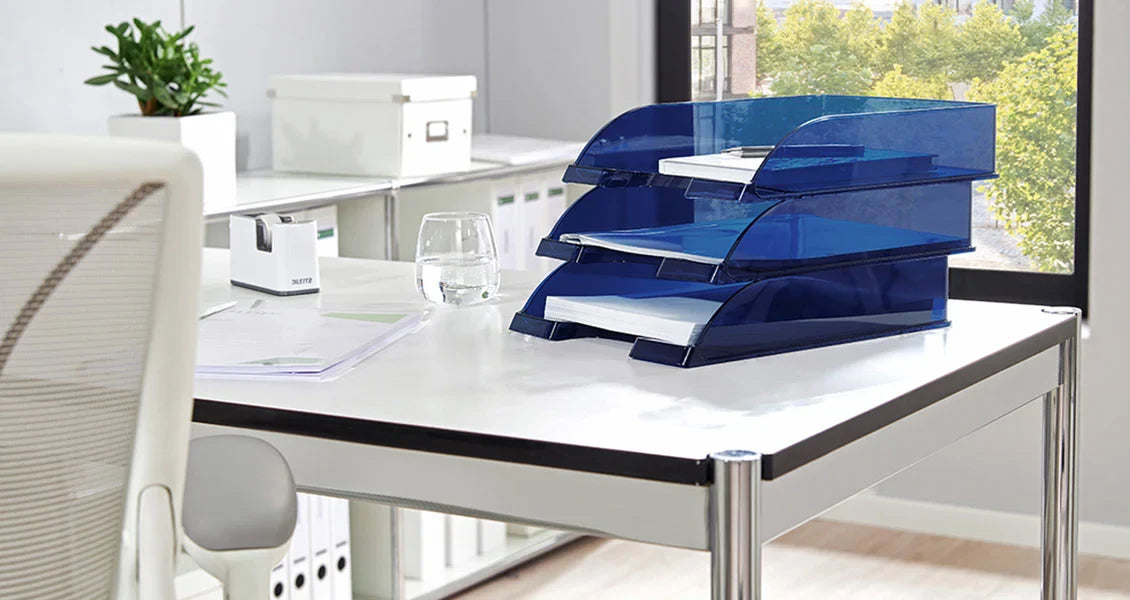Slip boxes are becoming increasingly popular for organizing stationery and other office supplies. They help in decluttering, improving productivity, and keeping your workspace tidy. However, as sustainability becomes more of a priority for individuals and businesses alike, many are wondering whether these organizational tools are eco-friendly. This blog explores whether they are environmentally friendly and the sustainable options available for those who want to reduce their ecological footprint. We’ll break it down into five easy steps to understand how they fit into the sustainable living movement.
Understanding the Materials Used in Slip Boxes

The eco-friendliness of a slip box largely depends on the materials it is made from. Traditional, they are often crafted from wood, plastic, or cardboard. Each material has different implications for sustainability.
- Wooden wooden organizers are generally considered more sustainable, especially if the wood is sourced from responsibly managed forests. Look for certifications like FSC (Forest Stewardship Council) to ensure the wood is harvested sustainably.
- Plastic: Plastic can be a major environmental concern due to its long decomposition time and harmful impact on wildlife. However, some manufacturers are now offering plastic slip boxes made from recycled materials or biodegradable plastic. Choosing these options can reduce your environmental impact.
- Cardboard: Cardboard is a more eco-friendly option as it is recyclable and biodegradable. If you opt for a cardboard slip box, ensure it is made from post-consumer recycled material to further reduce its environmental footprint.
Impact of Manufacturing Processes Sustainability
Beyond the material itself, the way they are manufactured plays a significant role in their sustainability. A product that is made using eco-conscious processes has a much lower environmental impact than one that isn’t.
- Energy Use: Look for it that is manufactured using renewable energy sources or efficient production processes. Companies that use clean energy reduce their carbon emissions, making their products more sustainable.
-
Waste Reduction: Sustainable manufacturers often implement processes that minimize waste, such as zero-waste manufacturing or using scraps for other purposes. Opting for brands that prioritize waste reduction ensures that your purchase supports more eco-conscious production methods.
Durability and Reusability of Slip Boxes
A sustainable product is not just about how it is made but also about how long it lasts. A slip box that can withstand wear and tear and be used for many years is far more eco-friendly than one that needs to be replaced frequently.
- Long-lasting Materials: Wooden letter trays, especially those made from solid hardwood, are durable and can last for many years. If you choose high-quality materials, you can use it for an extended period without needing to replace it.
- Plastic and Cardboard Durability: While plastic slip boxes may be durable, they are not as long-lasting as wood. Cardboard options, on the other hand, tend to wear out quicker but are biodegradable. If you choose cardboard, opt for sturdier, thicker varieties that will last longer.
Recycling and End-of-Life Disposal
Even the most sustainable products eventually reach the end of their life cycle. The ability to recycle or compost your box when it is no longer usable contributes significantly to its overall environmental footprint.
- Recyclability: Wooden ones that are untreated or finished with non-toxic materials are often recyclable. Cardboard are generally recyclable and biodegradable, making them an excellent eco-friendly option at the end of their life cycle.
- Plastic Slip Box: They can be tricky when it comes to recycling. Many plastic products are not recyclable or can only be recycled in specific ways. Choose plastic slip boxes made from recyclable materials and ensure you dispose of them through appropriate recycling channels.
- Composting Options: If you're looking for a truly eco-friendly disposal option, look for it made from biodegradable materials such as bamboo or untreated wood. These can decompose in composting facilities, returning nutrients to the earth.
Choosing Sustainable Brands and Products
The final step in ensuring it is eco-friendly is to select products from brands that prioritize sustainability. Many companies are now making a conscious effort to reduce their environmental impact and offer eco-friendly products. Here’s how to identify them:
- Certifications: Look for eco-certifications such as FSC (Forest Stewardship Council) for wood products or a "recyclable" label for plastic products.
- Transparency: Brands that are committed to sustainability are often transparent about their materials, manufacturing processes, and end-of-life options. Researching these companies will help you choose products that align with your values.
- Supporting Local and Small Businesses: Many smaller businesses prioritize sustainability and ethical practices. Supporting these businesses can contribute to a more sustainable future.

